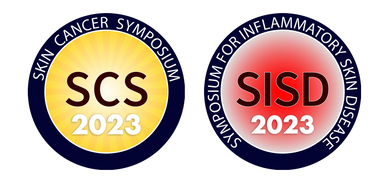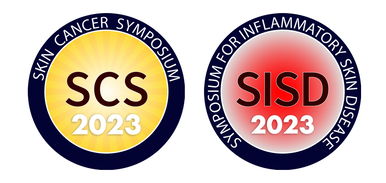DAY 2 - DAILY SUMMARY
April 8, 2021
April 8, 2021
Dermoscopic Features of Nevi and Melanoma: Skin Cancer Symposium® 2021 Highlights
|
Ashfaq A. Marghoob, MD
|
Dr. Marghoob reviewed dermoscopic features of nevi vs. melanoma. In general, melanomas tend to be more disorganized, however nevi can be disorganized, and melanoma can appear organized. With dermoscopy, he highlights it is important to consider not the silhouette of pigmented lesions, but contents of the silhouette.
Recognized organized patterns of nevi must be considered in context of certain factors. These factors include patient age, signs of sun damage, skin type, anatomic location, clinical appearance of the lesion, and how the lesion compares to other pigmented lesions on the patient. Patterns of benign nevi include a regular network, patchy network, peripheral network with central hypopigmentation, peripheral network with central globules, globular, globular cobblestone, reticular with peripheral globules, and homogenous blue and brown. The talk went on to classify these patterns in regard to specifical contextual factors which should raise suspicion for possible melanoma. Finally, presence of any melanoma specific structures should raise consideration for biopsy of a pigmented lesion. This includes an atypical network, angulated lines, atypical streaks, negative network, shiny white structures, atypical blotches, dots, raised blue-white veil, regression features (granularity/peppering, scar-like depigmentation, flat blue-white structureless veil, tan structureless areas), and abnormal vascular patterns (comma/curved, serpentine, corkscrew, polymorphous, milky red globules) |
Melanoma Immunotherapy for the Dermatologist: Skin Cancer Symposium® 2021 Highlights
|
Laura Ferris, MD, PhD
|
In her lecture, Dr Laura Ferris defined Immunotherapy as “breaking the tolerance that tumors induce in the immune system.” She explained this can be achieved either by breaking central T cell tolerance (e.g. CTLA-4 inhibitors) or by breaking peripheral T cell tolerance (e.g. PD-1 inhibitors). Ipilimumab, nivolumab, and pembrolizumab are FDA-approved immune checkpoint inhibitors for melanoma. She reviewed several recent key trials comparing these agents, particularly for patients with stage III and IV disease. She also touched on two ongoing trials that are evaluating the role of PD-1 inhibitors for adjuvant treatment of stage IIB/C melanoma.
The most common cutaneous AEs of immunotherapies include maculopapular, lichenoid, psoriasiform, and eczematous eruptions, as well as pruritus without rash. She reminds us that that vitiligo is a common later side effect of PD-1 inhibitors, and data suggests that the development of vitiligo is associated with a more favorable prognosis. Keratoacanthomas can arise within inflammatory dermatoses (mostly lichenoid) in patients on LD-1/PD-L1 inhibitors, however treating the underlying inflammation (such as with topical steroids) generally leads to involution without requiring surgical intervention. Less common eruptions include bullous pemphigoid and bullous lichen planus (especially with PD-1 inhibitors) and neutrophilic dermatoses (especially with ipilimumab), among others. Of interest, for patients on nivolumab, skin-related AEs take longer to resolve than other AEs (40 weeks on average). |



